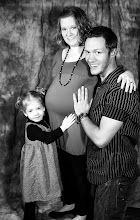Lardera Coffee works directly through relationships. We recently had the honor of reviewing all four of their coffees.
One thing that really jumped out to us is that they only have four coffees. This is so special to us because it tells us the value they place on two things, relationship, and excellence. They work hard and focus on delivering excellence in a few products, rather than mediocrity with many products. My husband roasts his own coffee as a hobby and side hustle, so I figured his input would be best for this review. Here is what he thought of each bean:
The first thing I noticed is that all of these coffees were lighter roasts. In my mind, this is a great indication of someone who truly cares about the bean. Light roast coffee is NOT weak coffee. Light roast beans have not been roasted to their 'second crack' which expands the bean like popcorn. A lighter, smaller bean represents more pack for the punch. There is a greater variety of flavors as the bean shines. A dark roast coffee has so much to do with the roast; these lighter roast profiles show respect and honor to the bean, the farmer, and the land from whence it came. I sampled all of the coffees using a V60 pourover, served hot and black.
First my favorite of the four: Catuai Honey, from Tarrazu, Costa Rica. This made my all time top 5 list of coffees I've tasted. I made this over a V60 pour over. The aromatics were great from the beginning. Just opening the sealed bag release a 'slap yo momma' good fragrance. I knew this would be a good pour. Truly it had everything I look for in a good cup of coffee. It was a little bright, fruity, and delightful. I rarely ever give a 10 on a roast, even my own best roasts because flavor is subjective. So, this coffee brought in an 8.5 Which is a very high mark for me. It was in the top 5 beans I've ever tasted. One of my favorite things about this cup was that it continued to evolve as the cup grew older. No moment was the same as the last while drinking this down.
Next up: Catuai Anaerobic, also from Tarrazu, Costa Rica. Best anaerobic coffee I have ever had! They describe it as a fruit bomb. For me, the Cherry notes dances the proudest. It was almost like a chocolate covered Cherry dipped in coffee.
On to Tipica Honey. This was the first one I tried. I thought I'd like it the most. It was a good middle of the road custom cup. Very reminiscent of the light roast pourovers I've had at some of our best local coffee shops. It met my expectations for a quality coffee, but it did not exceed my expectations like the Catuai honey did. For anyone looking to have an excellent and predictable cup of great coffee, this is it! It had citrus notes for dayz.
Lastly, Kenya Washed. This bean was very good as well. While it is at the bottom of my list, I want to reiterate, Lardera seems to place a huge focus of doing a few things really well. None of the coffees they produce are 'subpar.' The Kenya washed bean would have been more favored by me in a slightly darker roast, and this is just a matter of personal preference. I tasted sweet notes and chocolate notes. I also tastes some chaff. I don't mind some chaff, a paper-like flavor, in my cup because I know where it comes from. This comes from the initial crack of the coffee bean during a roast sheds the outermost layer of the bean. It's like thin paper when it comes off. It's possible that this bean was roasted in such a way that some of this chaff remained. Hence my suggestion to roast it a little darker to burn up or crack off the chaff. Still a very good cup of coffee. My second critique is in the name. I expected an African bean, but this bean, while called 'Kenya' comes from Costa Rica.
I appreciated that Lardera coffee has four beans, each very different from the other. I think coffee snobs would appreciate ordering all four of these beans in small batch and finding one of them in their top 10 list of great coffee beans.


Comments